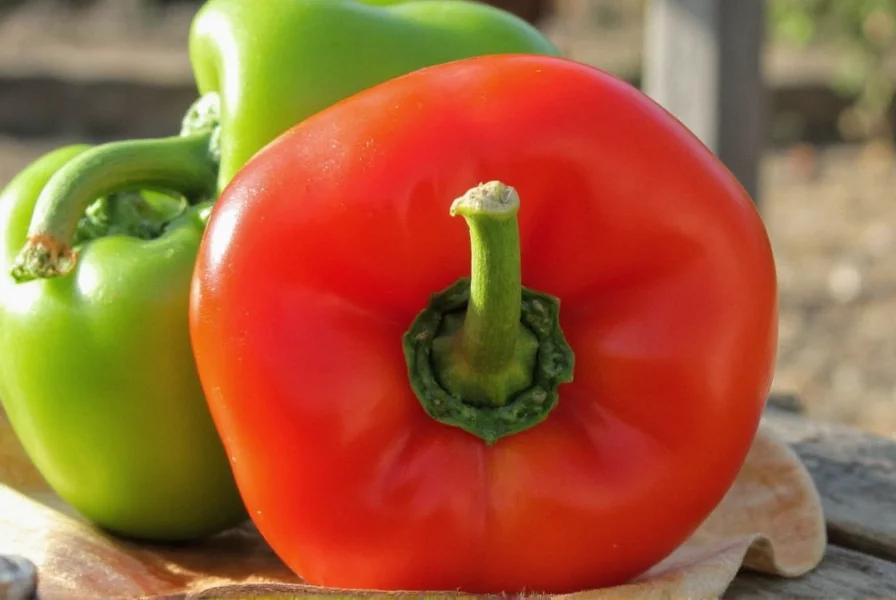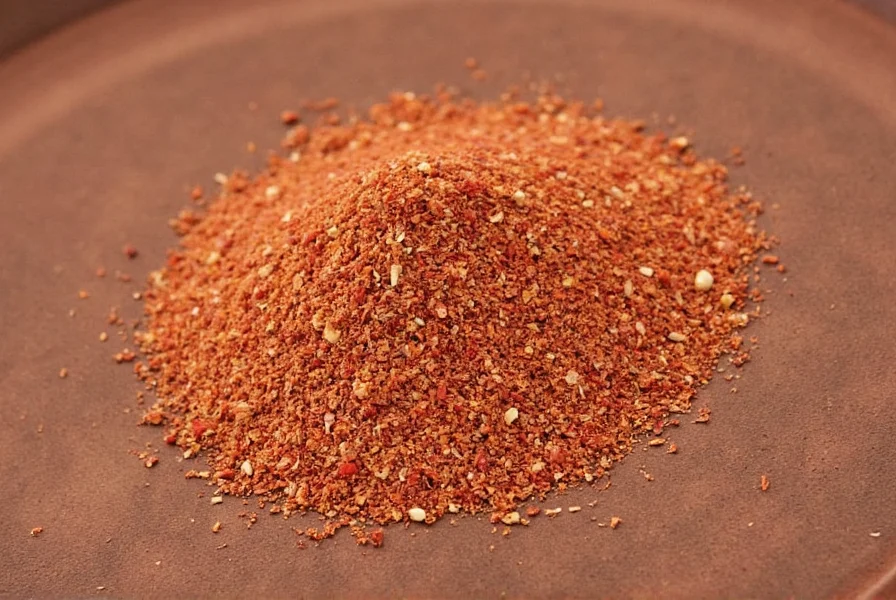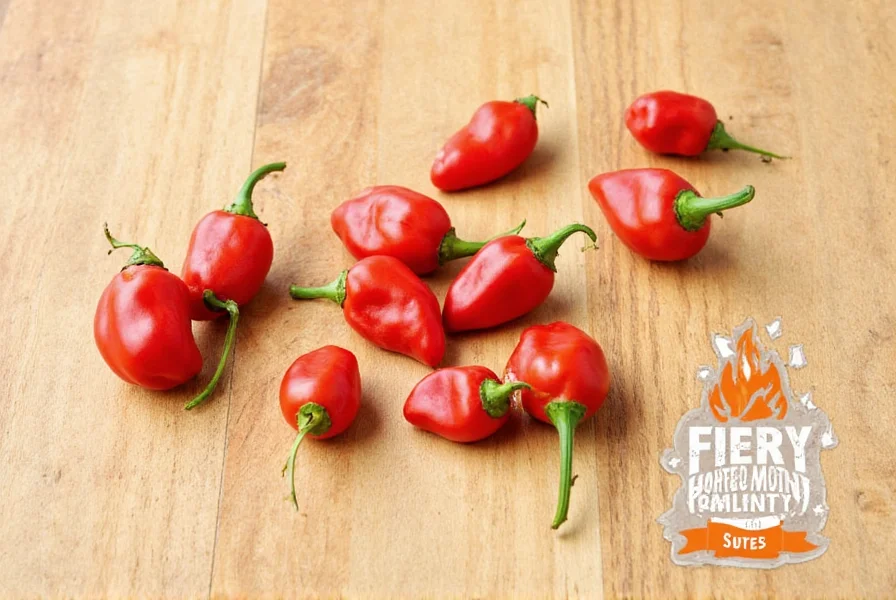Chiltepin peppers have a Scoville Heat Unit (SHU) range of 50,000–100,000, placing them between jalapeños (2,500–8,000 SHU) and habaneros (100,000–350,000 SHU). Known as the "mother of all peppers," this tiny wild chili delivers intense heat with bright, smoky flavors. In this guide, you'll learn exact Scoville measurements, safety tips, culinary uses, and how to choose authentic products.
Table of Contents
- What Is a Chiltepin Pepper?
- Scoville Units Explained: Chiltepin Heat Level
- Chiltepin vs. Other Peppers: Heat Comparison
- Creative Culinary Uses for Chiltepin Peppers
- Buying Guide: Authentic Chiltepin Products
- Conclusion: Using Chiltepin Safely
- Frequently Asked Questions
What Is a Chiltepin Pepper?
The chiltepin pepper — also known as chile piquín, bird pepper, or Mexican pepper — is a wild chili native to the southwestern United States and northern Mexico. It's small, round, and typically red when mature, though it can be orange, yellow, or green depending on ripeness.

Unlike cultivated peppers, chiltepins grow wild, often spread by birds that eat the fruits whole. Birds are immune to capsaicin, allowing them to disperse seeds naturally. This pepper is prized for its intense heat and complex fruity-smoky flavor profile.
Scoville Units Explained: Chiltepin Heat Level
The Scoville scale measures capsaicin concentration in peppers. Originally developed by Wilbur Scoville in 1912 using human taste tests, modern methods use HPLC for precision. Results are converted to Scoville Heat Units (SHU) for standardization.

Chiltepin peppers consistently measure 50,000–100,000 SHU. This places them in the upper-middle heat range:
- Bell pepper: 0 SHU
- Jalapeño: 2,500–8,000 SHU
- Serrano: 10,000–23,000 SHU
- Hatch green chili: 2,500–5,000 SHU
- Cayenne: 30,000–50,000 SHU
- Habanero: 100,000–350,000 SHU
- Ghost pepper: ~1,000,000 SHU
| Pepper | Scoville Heat Units (SHU) | Flavor Profile | Best For |
|---|---|---|---|
| Chiltepin | 50,000–100,000 | Bright, fruity, smoky | Salsas, rubs, finishing touches |
| Jalapeño | 2,500–8,000 | Grassy, earthy | Tacos, nachos, pickling |
| Habanero | 100,000–350,000 | Fruity, floral | Sauces, hot sauces, Caribbean dishes |
| Cayenne | 30,000–50,000 | Earthy, woody | Spice blends, soups, marinades |
| Ghost Pepper | ~1,000,000 | Smoky, sweet | Challenge eating, extreme hot sauces |

Why Chiltepin Stands Out
While not the hottest pepper, chiltepins deliver a unique heat-to-flavor ratio. Unlike habaneros or ghost peppers that overpower dishes with pure heat, chiltepins add bright, fruity complexity with a sharp, clean burn that fades quickly.
Creative Culinary Uses for Chiltepin Peppers
1. Smoky Salsa or Hot Sauce
Roast or dry-toast chiltepins to enhance smoky notes, then blend with garlic, lime, tomatoes, and onions. Perfect for tacos, grilled meats, or scrambled eggs.
2. Dry Rubs and Spice Blends
Crush dried chiltepins with smoked paprika, cumin, salt, and brown sugar for bold rubs. Ideal for brisket, pork shoulder, or roasted vegetables.
3. Infused Oils or Vinegars
Steep crushed chiltepins in olive oil or white vinegar for zesty dressings, marinades, or bread dips.
4. Finishing Sprinkle
Use crushed chiltepin like black pepper — sprinkle sparingly over soups, pastas, or roasted veggies. A little goes a long way due to potency.
5. Spicy Condiments
Blend ground chiltepin into softened butter or mayo for burgers, sandwiches, or corn on the cob.
Buying Guide: Authentic Chiltepin Products
Types of Chiltepin Products
- Dried Whole Chiltepins: Look for uniform red color and no mold. Best for roasting or grinding.
- Crushed or Ground: Ensure "100% chiltepin" labeling to avoid fillers.
- Infused Sauces or Salts: Check ingredient lists for authenticity.
| Product | Features | Best For | Recommended Brands |
|---|---|---|---|
| Dried Whole Chiltepins | Natural, unprocessed; retain full flavor | Cooking from scratch, roasting | Sabrosón, Rio Grande Naturals |
| Chiltepin Salt Blend | Sea salt + crushed chiltepin | Finishing dishes, popcorn | La Flor de San Luis, MexGrocer |
| Chiltepin Hot Sauce | Vinegar-based, balanced heat | Drizzling, dipping | Ranchi Chiltepín, Desert Gold Chile Co. |
Storage Tips
- Dried whole peppers: Airtight container in cool, dark place (up to 1 year).
- Ground or crushed: Sealed jar away from light and heat.
- Sauces or oils: Refrigerate after opening.
Conclusion: Using Chiltepin Safely
With 50,000–100,000 SHU, chiltepins offer intense heat without sacrificing flavor complexity. Always wear gloves when handling, start with small amounts in recipes, and store properly to maintain potency. This wild chili can elevate your cooking when used responsibly.
Frequently Asked Questions
How many Scoville units does a chiltepin pepper have?
Chiltepin peppers typically range from 50,000 to 100,000 Scoville Heat Units (SHU). This places them between cayenne (30,000–50,000 SHU) and habaneros (100,000–350,000 SHU), making them significantly hotter than jalapeños (2,500–8,000 SHU) but milder than ghost peppers (~1,000,000 SHU).
Are chiltepin peppers hotter than habaneros?
Generally, no. Chiltepins (50,000–100,000 SHU) are milder than habaneros (100,000–350,000 SHU). The mildest habaneros start at the upper end of the chiltepin range. However, chiltepins deliver heat more quickly with a sharp, clean burn that fades faster than habaneros' lingering heat.
Why are chiltepin peppers called the "mother of all peppers"?
Chiltepins are considered the "mother of all peppers" because they're one of the original wild chili species from which many cultivated peppers descended. They grow naturally without human intervention across the southwestern U.S. and Mexico, representing the purest ancestral form of chili pepper.
How should I handle chiltepin peppers safely?
Always wear gloves when handling chiltepins. Avoid touching your face, and work in a well-ventilated area. If skin contact occurs, wash immediately with soap and cold water (not hot). Never inhale fumes during cooking — use a mask if grinding dried peppers.
What's the best way to reduce chiltepin heat in cooking?
To reduce heat while preserving flavor: 1) Remove seeds and white membranes (highest capsaicin concentration), 2) Cook longer to mellow heat, 3) Pair with dairy (yogurt, cheese) to neutralize capsaicin, 4) Balance with sweetness (honey, fruit), or 5) Use less than recipe calls for and adjust gradually.
Where can I buy authentic chiltepin peppers?
Authentic chiltepins are found at: 1) Specialty Mexican markets in the southwestern U.S., 2) Online retailers like MexGrocer or The Chile Pepper Institute, 3) Farmers' markets in native growing regions, or 4) Wild-harvested (with permission). Look for "wild harvested" or "native chiltepin" labels to ensure authenticity.
How long do dried chiltepin peppers last?
Properly stored in airtight containers away from light and heat, dried whole chiltepins last 1–2 years. For extended freshness (up to 4 years), store in the freezer. Ground chiltepins lose potency faster than whole peppers. Heat levels gradually decrease over time, but they remain safe to eat indefinitely if kept dry.










 浙公网安备
33010002000092号
浙公网安备
33010002000092号 浙B2-20120091-4
浙B2-20120091-4